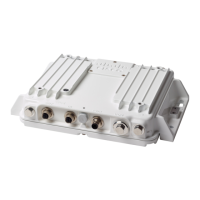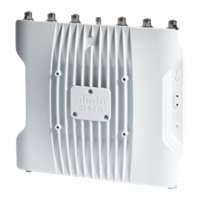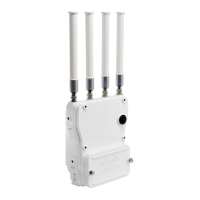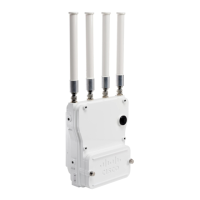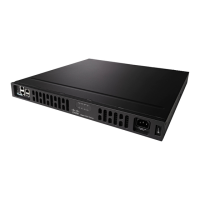5-4
Cisco Wireless ISR and HWIC Access Point Configuration Guide
OL-6415-04
Chapter 5 Configuring Encryption Types
Configure Encryption Types
This example shows how to create a 128-bit WEP key in slot 3 for VLAN 22 and sets the key as the
transmit key:
router# configure terminal
router(config)# interface dot11radio 0
router(config-if)# encryption vlan 22 key 3 size 128 12345678901234567890123456
transmit-key
router(config-ssid)# end
WEP Key Restrictions
Table 5-1 lists WEP key restrictions based on your security configuration.
Step 3
encryption
[vlan vlan-id]
key 1-4
size { 40 | 128 } encryption-key
[ 0 | 7 ]
[transmit-key]
Create a WEP key and set up its properties.
• (Optional) Select the VLAN for which you want to create
a key.
• Name the key slot in which this WEP key resides. You can
assign up to 4 WEP keys for each VLAN.
• Enter the key and set the size of the key, either 40-bit or
128-bit. 40-bit keys contain 10 hexadecimal digits; 128-bit
keys contain 26 hexadecimal digits.
• (Optional) Specify whether the key is encrypted (7) or
unencrypted (0).
• (Optional) Set this key as the transmit key. The key in slot
1 is the transmit key by default.
Note Using security features such as authenticated key
management can limit WEP key configurations. See the
“WEP Key Restrictions” section on page 5-4 for a list
of features that impact WEP keys.
Step 4
end Return to privileged EXEC mode.
Step 5
copy running-config startup-config (Optional) Save your entries in the configuration file.
Command Purpose
Ta b l e 5-1 WEP Key Restrictions
Security Configuration WEP Key Restriction
WPA authenticated key management Cannot configure a WEP key in key slot 1
LEAP or EAP authentication Cannot configure a WEP key in key slot 4
Cipher suite with 40-bit WEP Cannot configure a 128-bit key
Cipher suite with 128-bit WEP Cannot configure a 40-bit key
Cipher suite with TKIP Cannot configure any WEP keys
